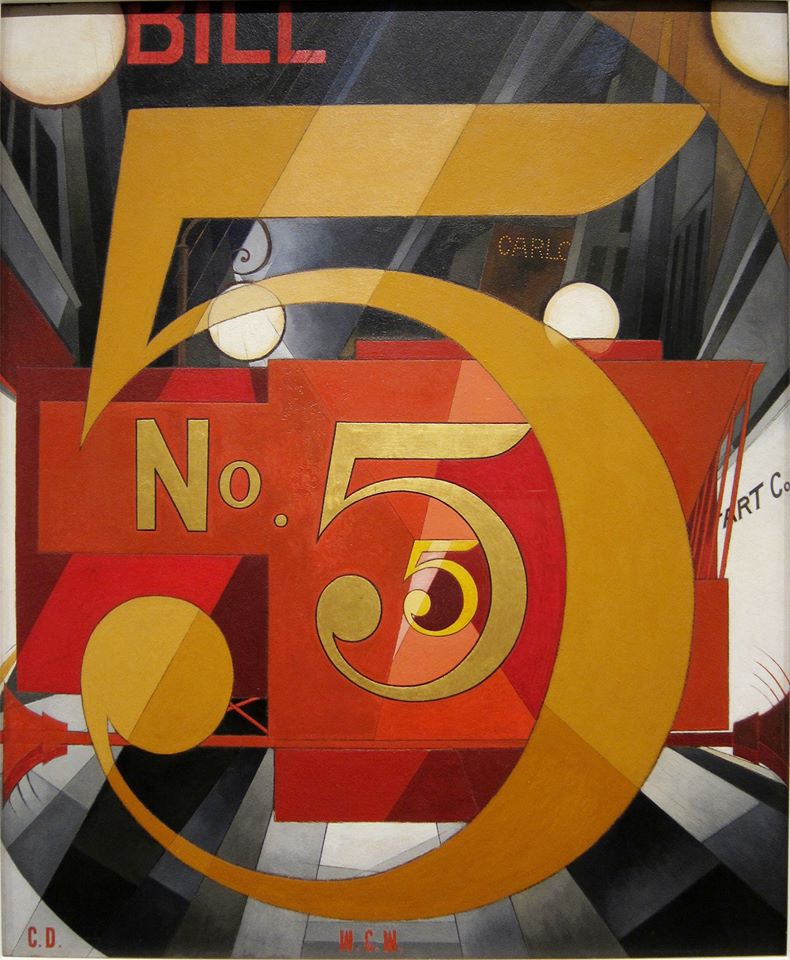May 26, 2020
by Ruth Greene-McNally, OMAA Curator and Collections Manager
A major advocate of cubist-influenced Precisionism, Charles Demuth’s celebrated industrial landscapes established his career as a Modernist. Yet Demuth achieved equal regard for his poetic still-life florals, primarily painted in watercolor. Most of Demuth’s florals were created at his Lancaster, Pennsylvania home from gardens tended by the artist and his mother. The still lifes represent the peak of his career between 1915-1920. Demuth continued to paint flowers from the family garden as his health deteriorated from complications of diabetes.
Although Demuth spent his later years at home, he maintained close ties with his NY and Ogunquit circle of friends: Marsden Hartley, John Marin, Alfred Stieglitz, Georgia O’Keefe, and Dr. William Carlos Williams. In their honor, Demuth’s poster portraits of celebrated friends used objects and wordplay to convey the life of the sitter, rather than traditional likeness. Special attention has been given to the iconic painting “I Saw the Figure 5 in Gold,” Demuth’s portrait of William Carlos Williams. The portrait was inspired by William’s poem, “The Great Figure.”
Among the rain
and lights
I saw the figure 5
in gold
on a red
firetruck
moving
tense
unheeded
to gong clangs
siren howls
and wheels rumbling
through the dark city.
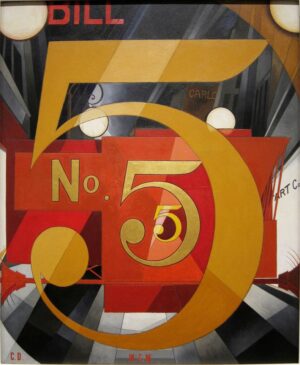
Charles Demuth (1883-1935)
I Saw the Figure Five in Gold
1928
Oil on cardboard
90.2 x 75.2 cm
Williams’ poetry is deliberately straightforward, but Demuth’s painting is complicated. You really must know the poem to decode the painting. The setting is a tunnel-like street, which is flanked by sidewalks and buildings. Much of this backdrop is gray and black, but for the illuminated shop windows and globular streetlamps on both sides. The fire engine dominates the middle of the composition and although its form is abstracted we can recognize it by its red color. We can see the truck’s ladder on the right, and a long bar stretches across the bottom of the truck, which resembles an axle with two wheels.
Text by Dr. Lara Kuykendall
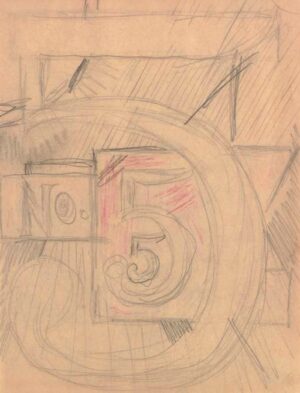
Charles Demuth
Sketch for “I Saw the Figure Five in Gold”
Graphite and color pencil on paper
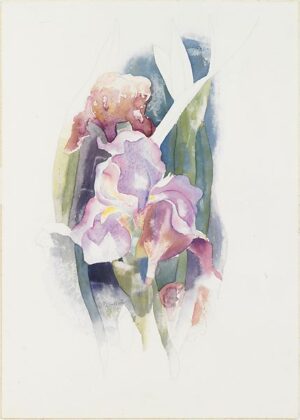
Charles Demuth (1883-1935)
Irises
Private Collection
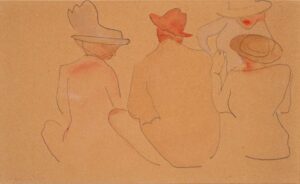
Charles Demuth (1883-1935)
The Gossips
c. 1914
#1967.22, Gift of Mrs. William Carlos Willams
While Demuth’s blithe title may not directly allude to art colony small talk, Demuth was known to associate with many regional Maine and New York painters and patrons, including Edith
Halpert who exhibited Demuth at her Downtown Gallery and Florence Williams, who donated the watercolor to OMAA. Demuth’s dig makes light of small town affairs but the title underscores a deeper social commentary in the portrayal of the leisure class lounging, presumably on a beach, in their Gilded Age finery. During this period, Demuth produced a series of watercolors, many on Coney Island, that poked at controversial social mores, including homophobia and the posh ruling class at a turning point in American culture. With the outbreak of world war on the Western Front, two of the figures represented set their gaze upon a horizon beyond the immediate conversation.
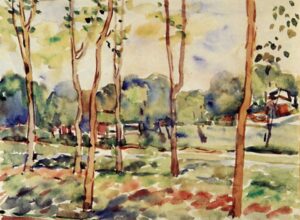
Charles Demuth (1883-1935)
Spring, April
1913
Watercolor on paper
8.5 x 12 in.
#1967.23, Gift of Florence Williams, 1967


